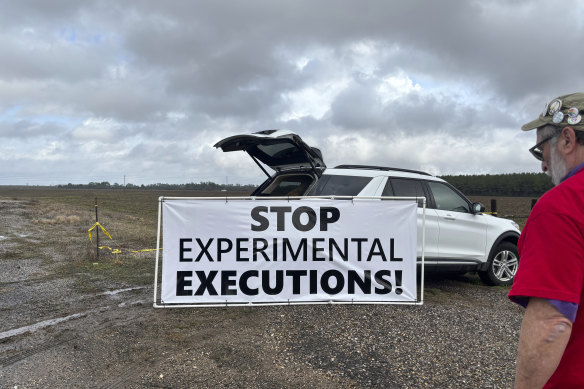But some doctors and organizations have sounded the alarm, and Smith's lawyers have asked the Supreme Court to halt the execution to review claims that the method violates the constitutional ban on cruel and unusual punishment and deserves greater legal scrutiny before it is used on anyone.
“There is little research on death by nitrogen hypoxia,” Smith’s attorneys wrote. “When a state considers using a new form of execution that has not been tried before anywhere, the public has an interest in ensuring that the state has researched the method.” appropriately and put in place procedures to minimize the pain and suffering of the convicted person.”
In her dissent, Sotomayor wrote that Alabama had shrouded its execution protocol in secrecy, releasing only a heavily redacted version. She also said Smith should be allowed to obtain evidence about the execution protocol and move forward with his legal challenge.
“This information is important not only to Smith, who has additional reason to fear the stretcher, but to anyone the state seeks to execute using this new method,” Sotomayor wrote.
“Twice now this court has ignored Smith’s warning that Alabama would unconstitutionally expose him to the risk of pain,” Sotomayor wrote. “I sincerely hope he is not proven right a second time.”
Justice Elena Kagan wrote a separate dissent, joined by Justice Ketanji Brown Jackson.
In his final hours, Smith met with family members and his spiritual advisor, according to a prison spokesman.
Hood said by phone that he had a final meal of T-Bone steak, hash browns, toast and eggs topped with A1 steak sauce.
“He is terrified of the torture that might happen. But he is also at peace. One of the things he told me was that he would finally get out,” Hood said.
Smith was one of two men convicted in the 1988 murder-for-hire killing of Elizabeth Sinnett. Prosecutors said he and the other man were paid $1,000 each to kill Sinnett on behalf of her pastor husband, who was deeply in debt and wanted to collect on the insurance.

Anti-death penalty activists place signs along the road leading to Holman Correctional Facility in Atmore, Alabama, ahead of the scheduled execution of Kenneth Eugene Smith.credit: AP
The victim's son, Charles Sennett Jr., said in an interview with WAAY-TV that Smith “has to pay for what he did.”
“And some of these people say, 'Well, he doesn't need to suffer like that.' Well, he didn't ask Mama how she's suffering? They just did it. They stabbed her a few times,” the son said.
The execution protocol called for Smith to be strapped to a stretcher in the execution chamber — the same room in which he was restrained for several hours during the lethal injection attempt — and for an “air breathing apparatus with a full facepiece” to be placed over his face. After he has the opportunity to make a final statement, the warden, from another room, activates the nitrogen gas. It will be given through the mask for at least 15 minutes or “five minutes after a flat line signal on the EKG, whichever is longer,” according to state protocol.

Anti-death penalty activists campaign until the last minute on the road to prison in Alabama.credit: AP
The Society of Sant'Egidio, a Roman-based Catholic charity affiliated with the Vatican, urged Alabama not to go ahead with the execution, saying the method was “barbaric” and “uncivilized” and would bring “indelible shame” to the state. The experts appointed by the UN Human Rights Council warned that they believed the method of execution could violate the prohibition of torture.
Some states are looking for new ways to execute people because of the difficulty of finding the drugs used in lethal injections. Three states — Alabama, Mississippi and Oklahoma — have allowed nitrogen hypoxia as an execution method, but no state has attempted the untested method yet.
Smith's lawyers had raised concerns that he might choke to death on his own vomit during the flow of nitrogen gas. The state made a last-minute procedural change so that he would not be allowed food during the eight hours before the execution.
Sennett, 45, was found dead on March 18, 1988, in her home with eight stab wounds to the chest and one on either side of her neck, according to the coroner. Her husband, Charles Sennett, killed himself when the investigation focused on him as a suspect, according to court documents. John Forrest Parker, the other man convicted of murder, was executed in 2010.
Smith's conviction was overturned in 1989, but he was convicted again in 1996. The jury recommended life imprisonment by 11-1, but the judge reversed that and sentenced him to death. Alabama no longer allows a judge to override a jury's death penalty decision.
AP
Get a direct note from our foreign correspondents on what's making headlines around the world. Subscribe to the weekly What in the World newsletter here.

